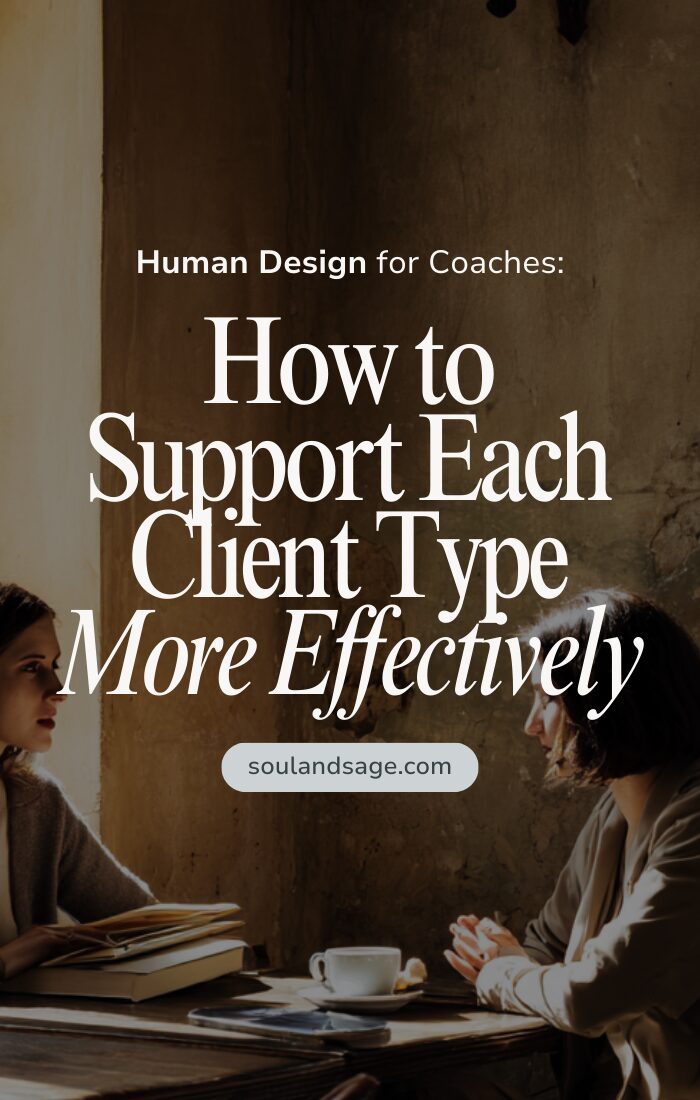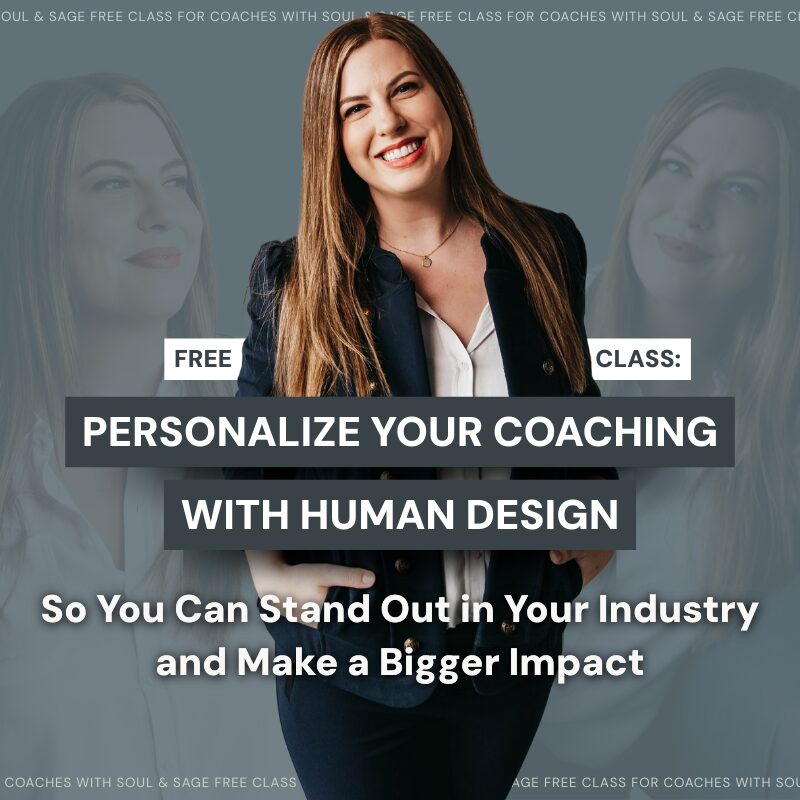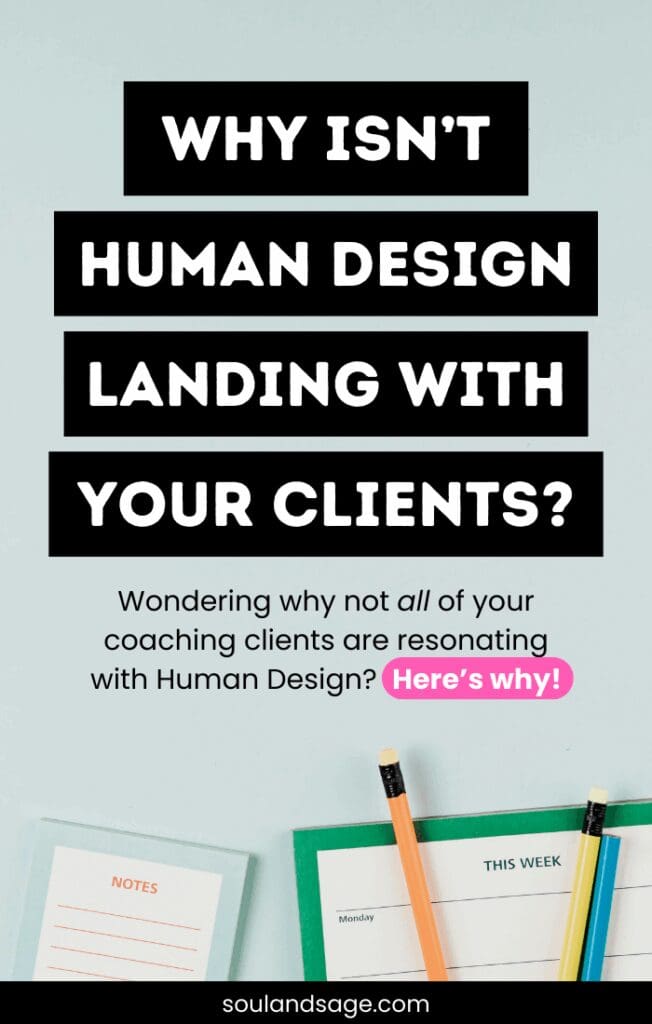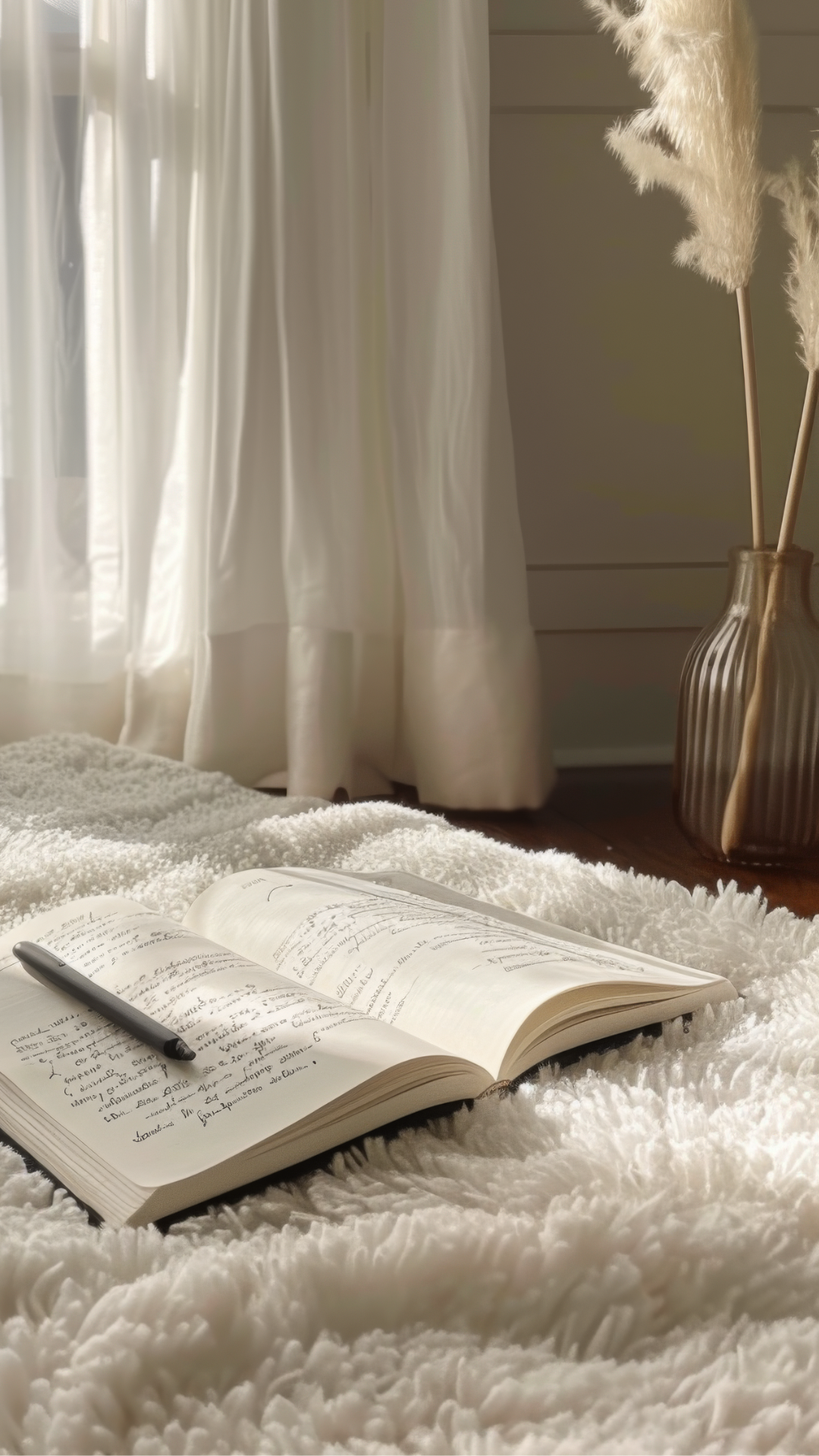If you’re a business or marketing coach, you already know: There’s no shortage of formulas, frameworks, and templates promising to be the thing that will finally help your clients succeed.
But here’s the truth of the matter…
Those one-size-fits-all strategies?
They often lead to burnout, resistance, and businesses that your clients actually hate. 😜
That’s where Human Design comes in.
Human Design is a powerful tool for helping you understand how your clients are uniquely wired to communicate, market, and show up in their businesses. It helps you toss out the cookie-cutter advice and offer personalized support that actually aligns with who your clients are—energetically, strategically, and creatively.
In this post, we’re diving deep into Human Design for business coaches, with lots of tangible examples. Ready to learn how Human Design can transform the way you coach your clients around marketing, brand messaging, offer creation, and more? Let’s jump in.

Why One-Size-Fits-All Strategies Don’t Work
Let’s say two of your clients are both launching group programs.
Client A is a Manifesting Generator with Sacral Authority and a 3/5 Profile. She thrives on experimentation, likes to work fast, and needs to feel excited and turned on by her content and offers.
Client B is a Projector with Emotional Authority and a 2/4 Profile. She needs time to feel into big decisions and does best when recognized for her natural gifts in intimate, relationship-based spaces.
Now imagine telling both of them to batch two months of content, record a bunch of high-energy reels, and post every day on Instagram. 😬
For Client A, that might feel fun (at least temporarily). For Client B? That plan could send her straight into burnout-ville.
Human Design gives you a roadmap to help each client market in a way that feels natural and sustainable. (Because alignment always outperforms a misaligned hustle.)
Using Human Design to Personalize Your Client’s Marketing Strategy
Here’s how you can start tailoring your business coaching using just a few key parts of your client’s Human Design chart:
1. Type
Each Type has a different way of moving through the world, and marketing is no exception.
- Generators/MGs: Magnetic when they follow their Sacral (gut) “yes.” Help them pay attention to what lights them up, and say no to draining content plans or strategies.
- Projectors: Do best with strategies rooted in recognition. Help them focus on invitations, strong positioning, and intentional periods of proactive rest.
- Manifestors: Made to initiate and inform. Teach them to trust their urges and communicate clearly with their audience when they’re about to take action on something new.
- Reflectors: Highly sensitive to their environment. Help them align with lunar cycles and external rhythms when planning launches or big decisions, rest proactively, and find the right spaces for them.
2. Authority
Decision-making is key in business. A Splenic Projector will move very differently than an Emotional Generator. Helping your clients honor their unique Authority can prevent rushed launches, content flops, or scattered and unclear offerings.
Client Example: One of my clients was constantly second-guessing her content calendar. Turns out, she had Emotional Authority and needed more time to feel into her decisions. Once she stopped forcing quick pivots, her content became way more impactful—and the results showed.
3. Profile
Your client’s Profile reveals their learning style, messaging tone, and relationship with visibility.
Here are some examples of what this can look like:
- A 1/3 is a natural researcher and experimenter. They’ll feel grounded when they know their content is based on solid info + their own personal trial and error.
- A 2/4 needs lots of alone time and gentle encouragement to come out of their shell. They might shine in close-knit spaces rather than loud launchy ones.
Brand Voice & Style Through the Lens of Human Design
Human Design can also help your clients get clear on their brand’s energy, tone, and vibe.
Look to:
- The Throat Center: Is it defined (consistent voice) or undefined (amplifies others’ voices)? Which Gates are activated in the Throat? A Gate 56 person might have a storyteller brand, while a Gate 62 is all about the facts and details.
- The Identity (G) Center: A defined G often brings a strong sense of direction and consistent brand identity. Undefined? That client may pivot often or feel like a chameleon, which is not a flaw. It can actually be a gift when embraced with awareness!
- Profile + Incarnation Cross: These reveal your client’s deeper essence and purpose—perfect for developing a brand story that truly feels like them.
Offer Creation with Human Design
Some clients are designed to go deep with a few people. Others are wired to build scalable, high-energy programs.
You can use HD to guide:
- Format: 1:1, group, passive, high-ticket, etc.
- Delivery: How much energetic output is sustainable for them?
- Pricing: e.g., Undefined Heart clients may underprice or struggle to claim their value.
- Timing: Projectors may need slower rollouts; MGs may benefit from multi-offer ecosystems.
Attracting Aligned Clients with Ease
Different Human Design Types attract clients differently:
- Generators/MGs: Magnetize when they share what lights them up.
- Projectors: Attract when they position themselves well and wait for recognition.
- Manifestors: Call in their audience by informing boldly and owning their leadership.
- Reflectors: Mirror the needs of their environment and are deeply intuitive guides.
You can also look at:
- Defined Centers and Channels: These show what energy your client is broadcasting consistently.
- Not-Self Themes: If they’re trying to force a niche, audience, or content strategy that doesn’t align, they’ll feel frustrated (Generator/MG), bitter (Projector), angry (Manifestor), or disappointed (Reflector).
Client Example: A Mani-Gen client kept trying to “niche down” like everyone told her to. Once she embraced her multi-passionate nature and wove that into her business, new clients will magnetized to her like never before.
Using HD in the Coaching Relationship Itself
Last but not least, Human Design isn’t just helpful for your clients’ businesses. It’s a game-changer for the coaching relationship too.
You can use it to:
- Support clients through resistance and challenges with more empathy.
- Understand their unique communication style, needs, and pace.
- Adjust your own coaching style to meet their energy and decision-making rhythms.
Here’s the bottom line:
Human Design is the ultimate tool for meeting each client where they are, instead of where a formula says they “should” be. It isn’t just a fun personality tool. It’s a powerful lens that can help you become a more intuitive, impactful, and empowering coach.
Whether you’re helping your clients build offers, write sales copy, create content, or design aligned launches, HD can give you the why behind what works (and what doesn’t) for each individual.
Ready to master Human Design and start confidently using it with your clients?
Watch my free 25-minute on-demand masterclass and learn the exact process for making your coaching more personalized and impactful with Human Design.
🌿 Check out the free class here

Loved this post? Save it on Pinterest! ↓


Share this post: